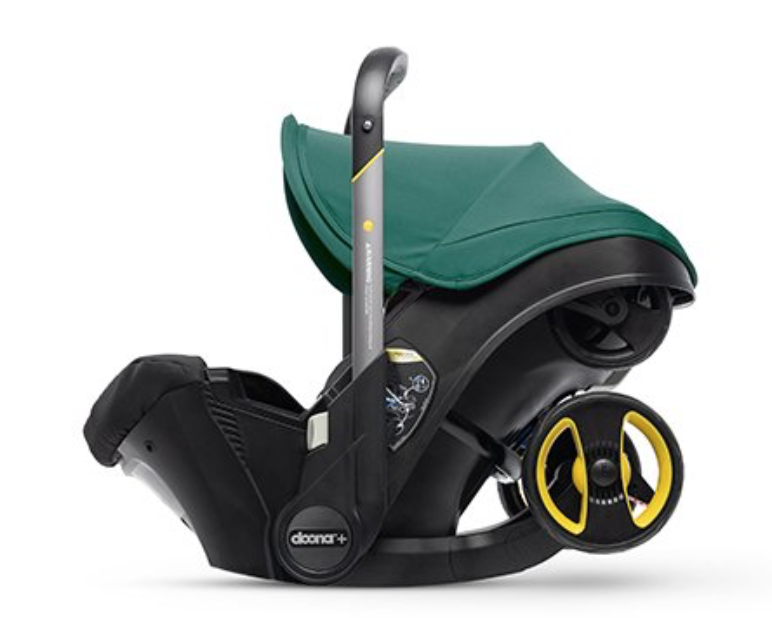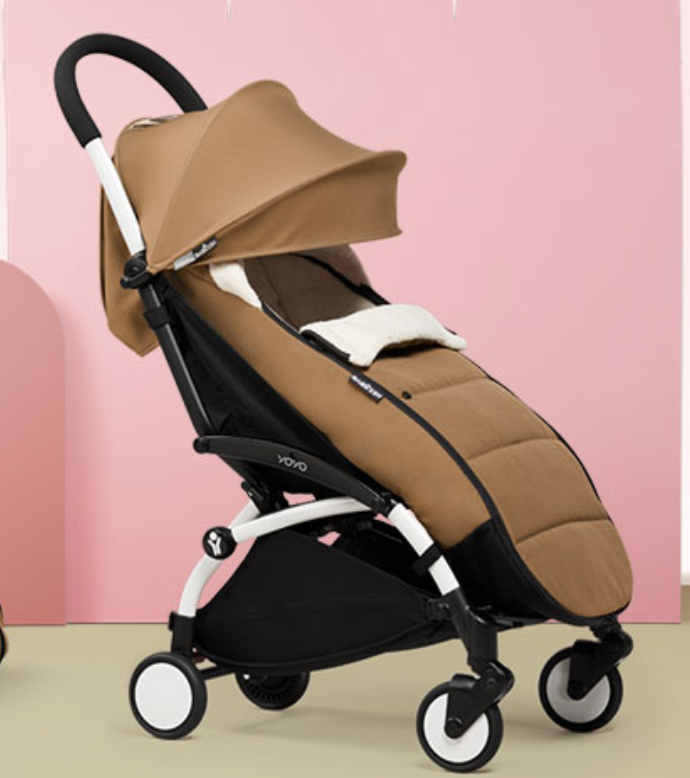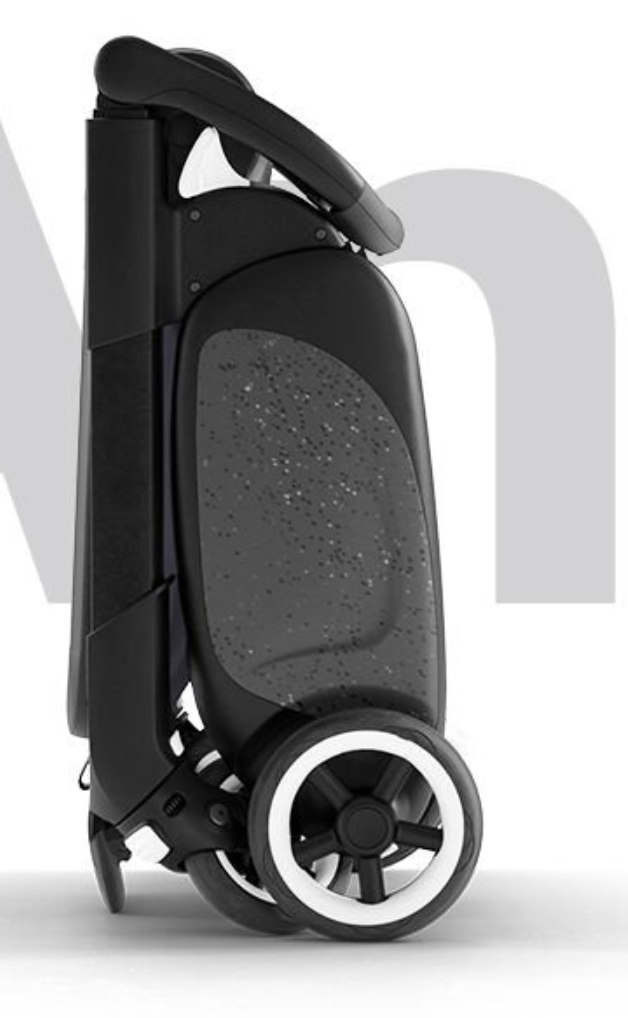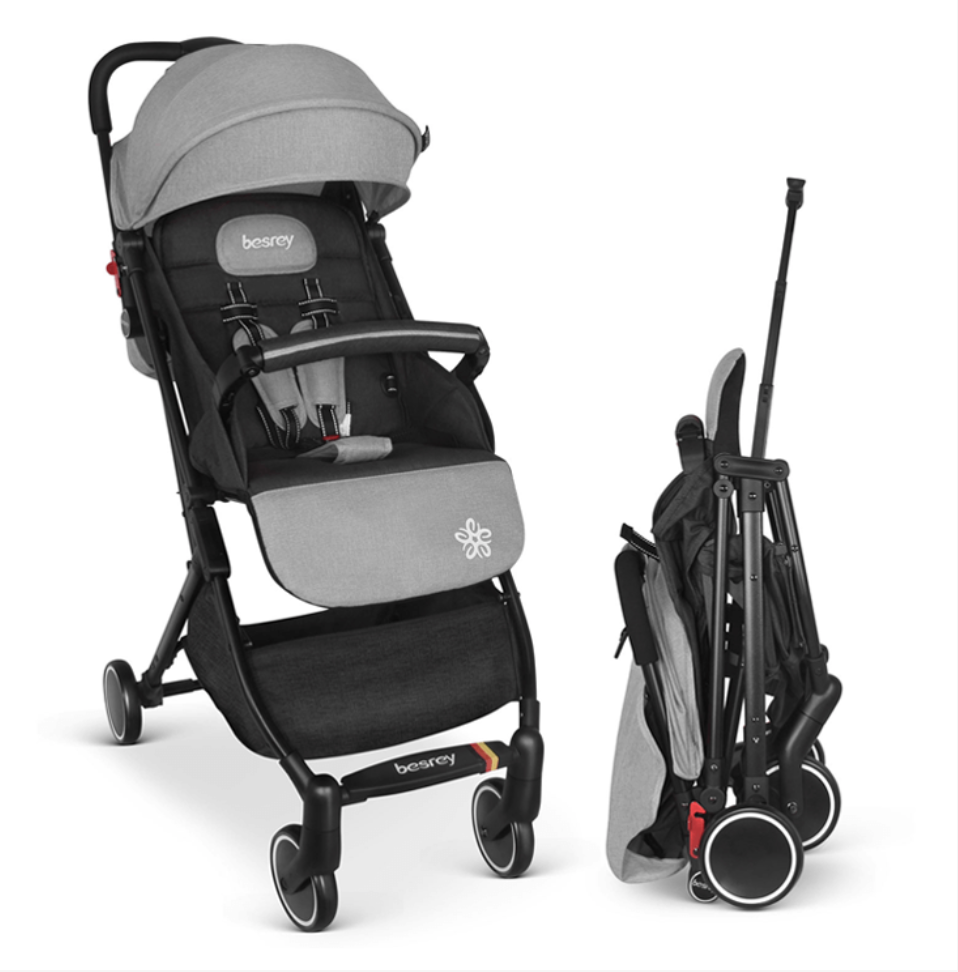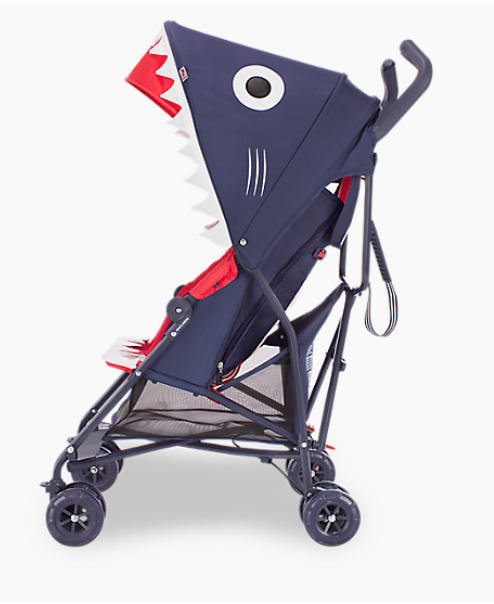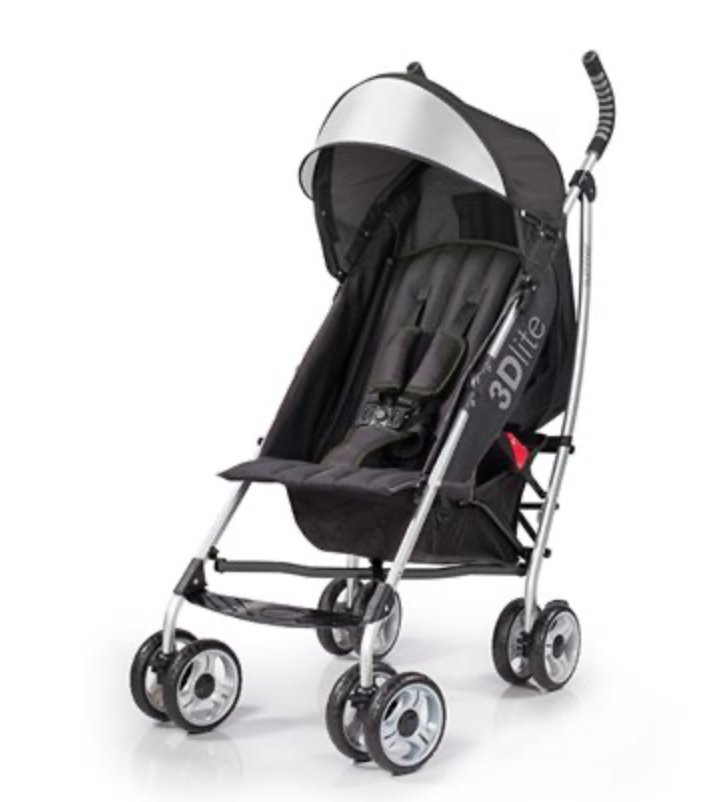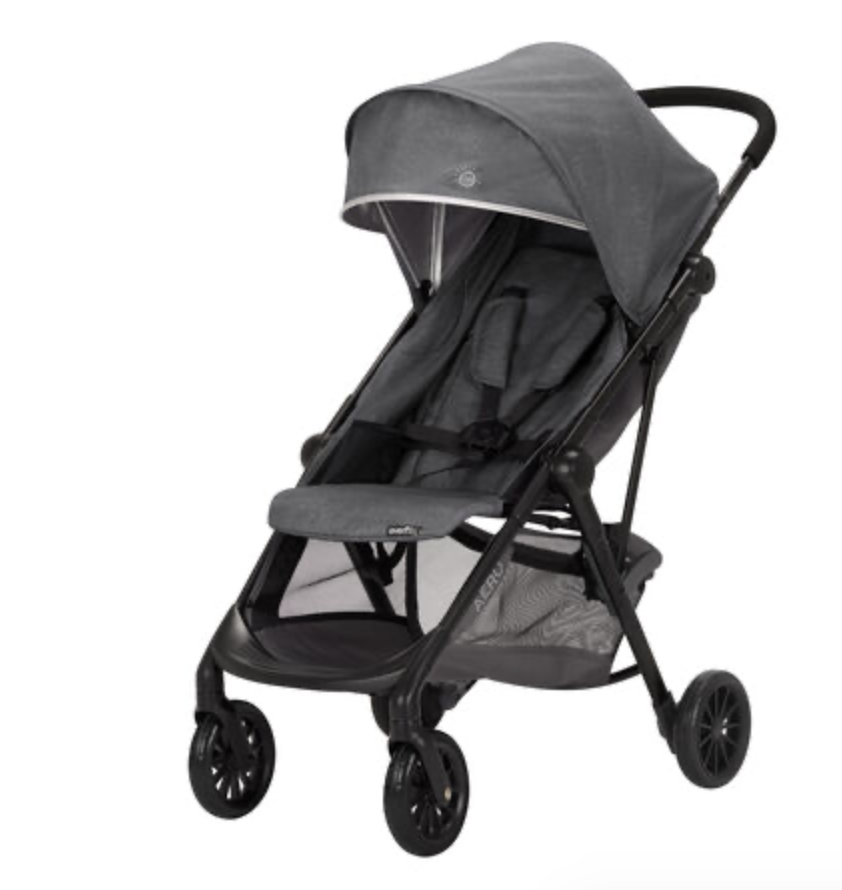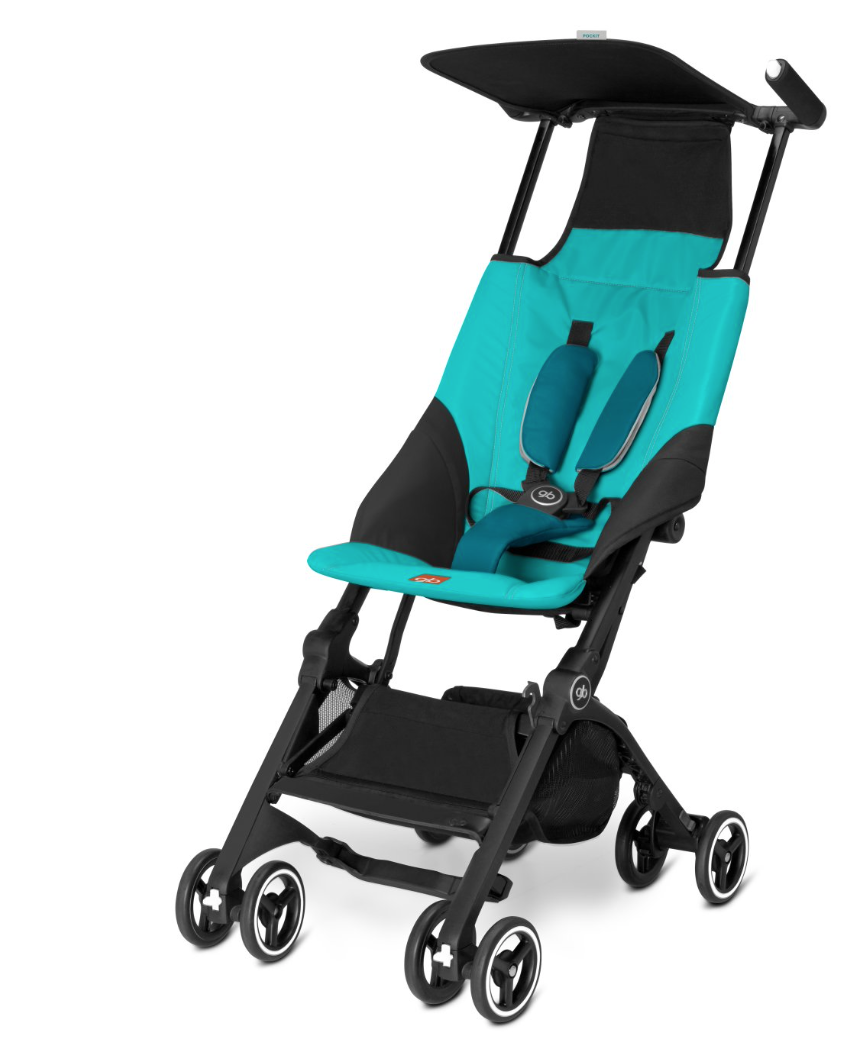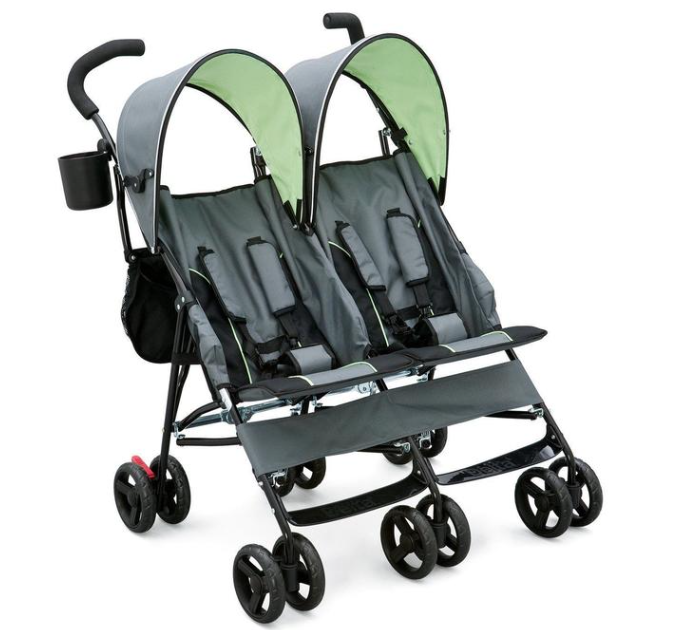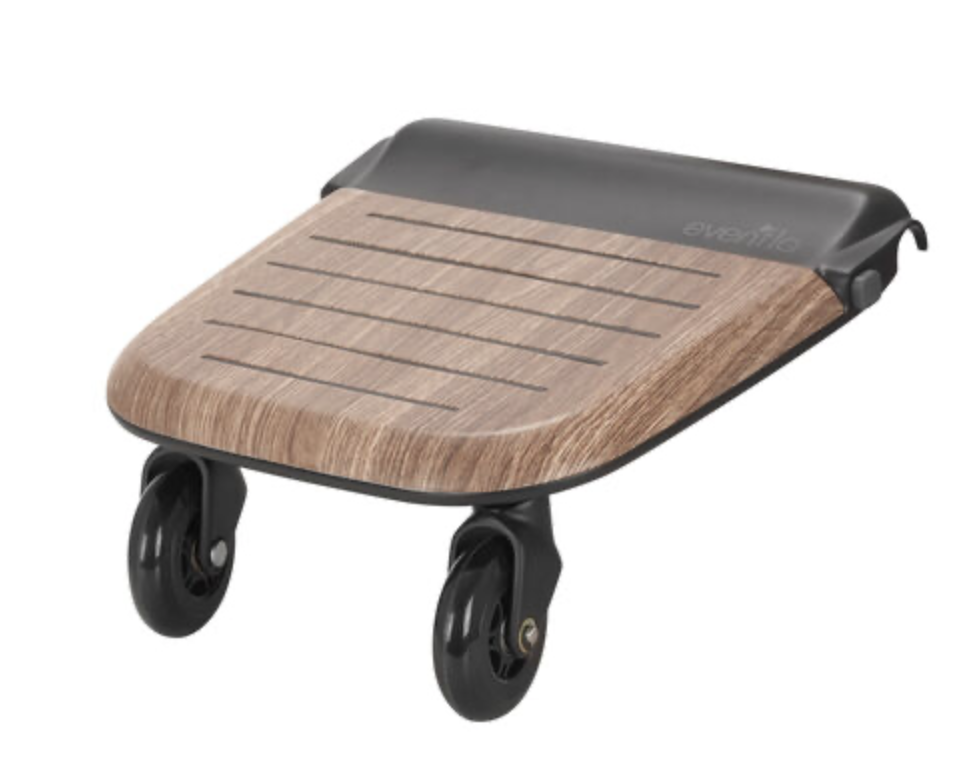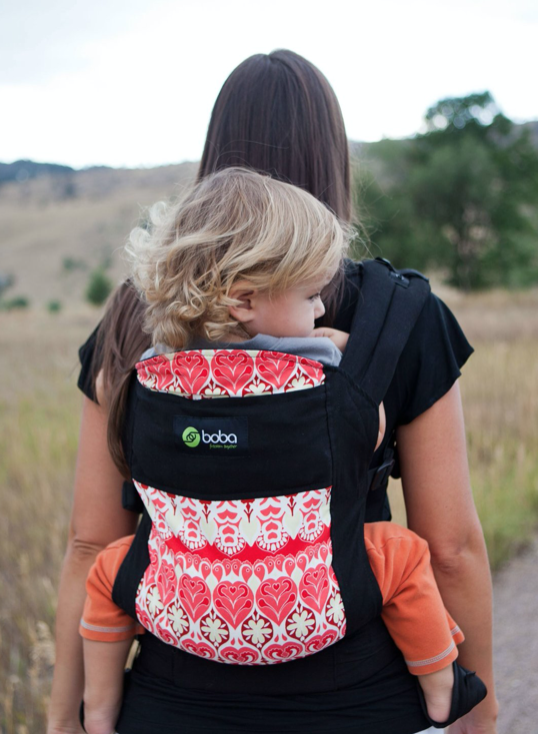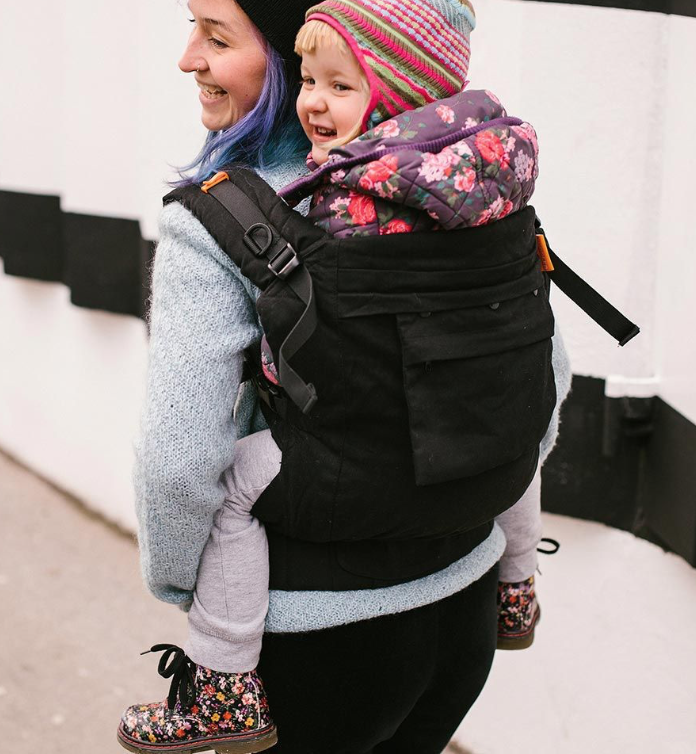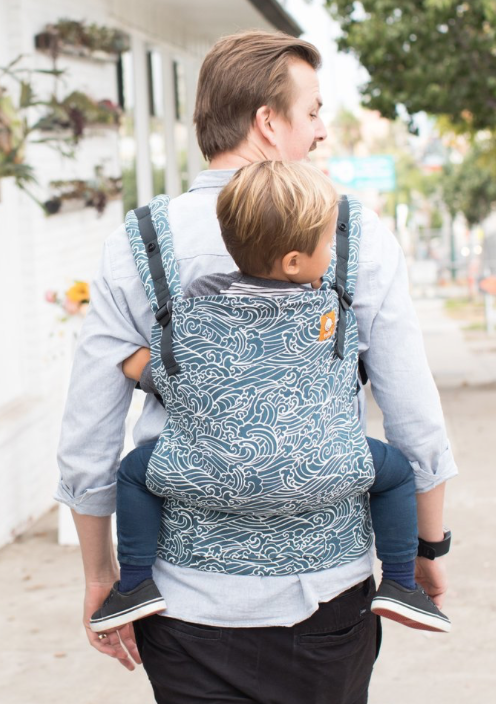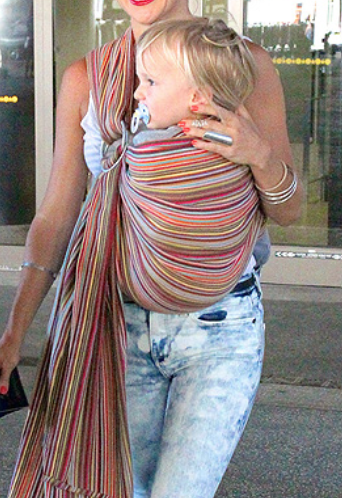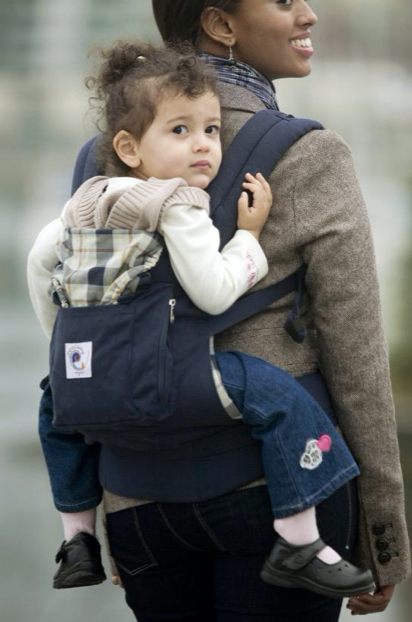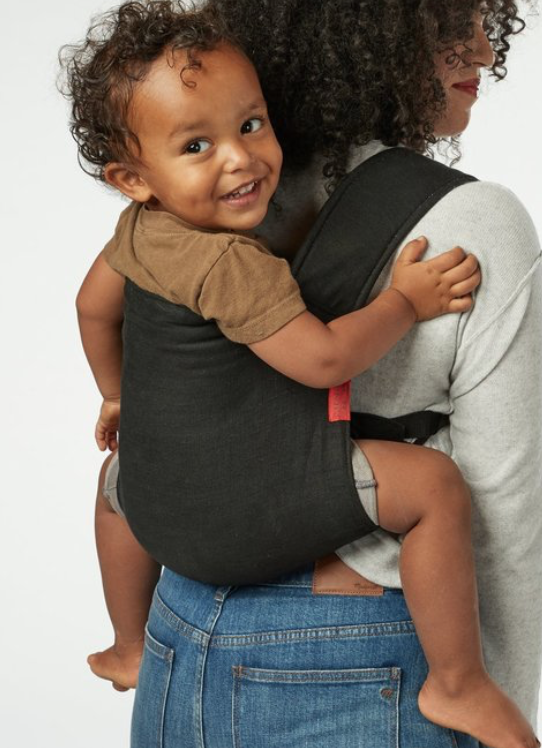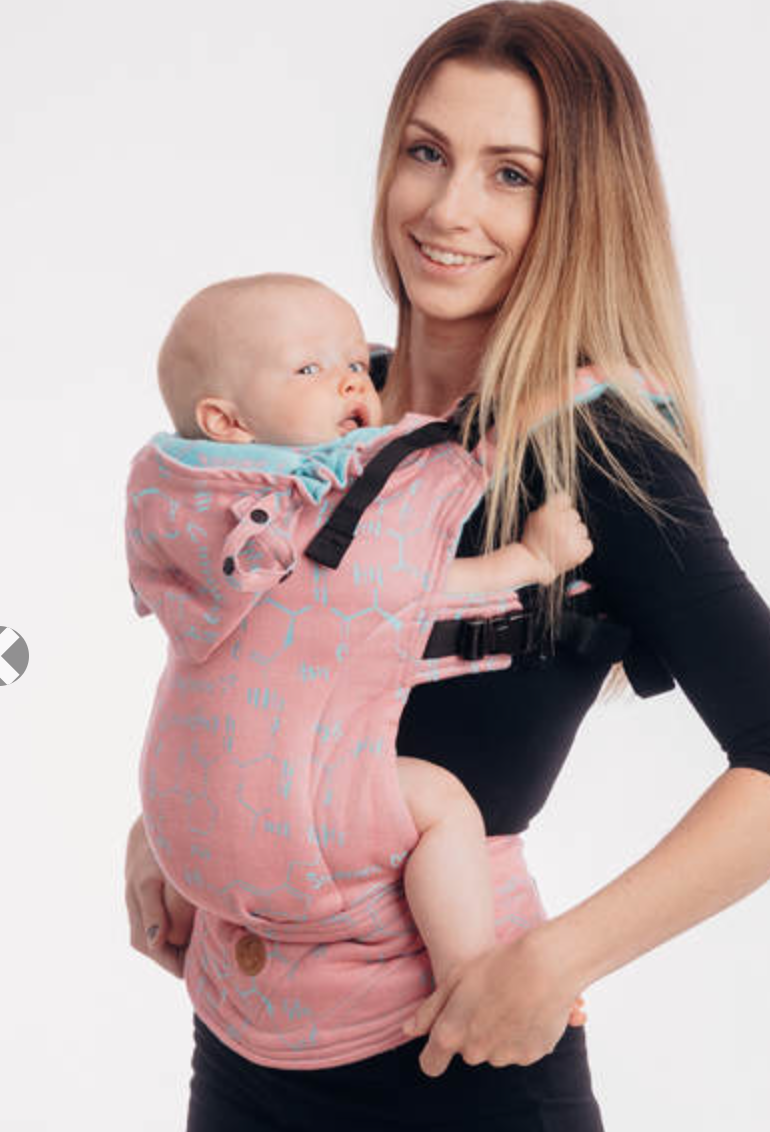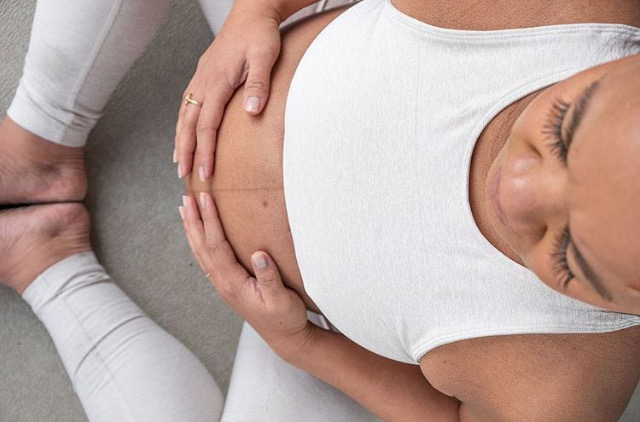HOPE
I found out during our first routine anatomy scan that our baby had very serious developmental issues.We were about 19 weeks into our pregnancy and already had begun to feel her kicking inside me by this point. The maternal specialist used so many technical words, I could only gather at the time that our baby’s lung had not developed at all, the heart was pushed into a position it shouldn’t be in, something with her diaphragm, neural tube, cystic hygroma, a cleft palate… the list went on. I was told the baby will likely not make it and given the option of termination. I was strongly against invasive prenatal testing, but in that moment, I chose to have the amniocentesis performed. I needed to know with absolute certainty what was happening.
We thought we had done everything right. My husband and I each took a genetic test for nearly 300 genetic conditions and I didn’t have a gene for any of the genetic conditions tested. My husband’s results were quite stellar as well. He only had one test positive. We felt pretty confident with our first attempt at pregnancy with those results.
But chromosomal abnormalities can still happen regardless of genes. While we were waiting for the amniocentesis results to come back, my husband and I sought another maternal neonatal specialist for a second opinion on the anatomy scan. This time, the doctor revealed even more issues while confirming the results of the initial scan.
Our hope for her survival diminished when the amniocentesis results confirmed that our baby had a very rare chromosomal abnormality in which all her cells were affected. She had non-mosaic tetrasomy 9p. According to the British based Rare Chromosome Disorder Support Group, this disorder in all cells either resulted in miscarriage or the baby survived only during the newborn period
Did I do something wrong? Did I eat too many sugary treats? I snuck in a couple bits of tuna tartar and took baths at home. Did I cause this demise with my lack of willpower to push off cravings? I asked every doctor the same questions, and the responses were unequivocally “no” without hesitation. What was happening with our baby’s development was beyond our control.
It took a couple weeks to find a supportive hospital team to conduct a follow-up anatomy scan and to receive the amniocentesis results from our genetic counselor, but it also provided deep understanding and validation for the next step we were about to embark on. Only after receiving multiple confirmations that our baby would not survive did I begin to feel termination would be a compassionate ending to the inevitably short time together with our baby.
RESILIENCE
When we first learned we were pregnant, we chose to have the most natural and safe birthing option available to us. This was our first pregnancy and we sought care with a midwifery group affiliated with a hospital known for its mommy-focused birthing unit. We joined Love Child a doula-owned and operated wellness group for expecting and new parents in the city and later, planned to hire a doula to support our birth. There is nothing more incredible about our capacity as human beings than the capacity to adapt to change.
After being advised to terminate, I asked what my options were to end the pregnancy. It came down to two options: an induction or a surgical procedure called dilation and evacuation (D&E). We were constantly pressured by doctors, regardless of which practice, to consider D&E. It would be a short 30 minute out-patient procedure with very little risk to the mother. However, there would be no guarantee that the baby would be intact and therefore, we would not be able to see our baby after the procedure.
Each time we were pressured to consider the surgery, I would spend the rest of the day crying. By this point, we had hired a referred bereavement doula, who had guided me to reflect on what is causing me to grieve whenever the possibility of D&E surfaced. What I realized was that procedure just didn’t align with my immense desire to hold my baby after the delivery. As it was, to even talk about ending my baby’s life while she was still kicking inside of me broke my heart. But once we committed to take D&E permanently off the table, I finally felt relief.
That relief was short-lived when I found out, regardless of which procedure we chose, hospitals required all late-term terminations to first stop the baby’s heart before induction or surgical evacuation with an ultrasound-guided intracardiac Potassium Chloride injection (commonly just referred to by its chemical composition, KCl). It’s a procedure very much like an amniocentesis, where a long needle is inserted into the baby’s heart and injected with potassium chloride. I did not want it. Unfortunately, our midwifery group called to tell us they couldn’t find a clinic or hospital that would induce without the injection. They left me with one final contact to call and apologetically left us to find a hospital or clinic on our own.
I found myself cold-calling a handful of hospitals and quickly realized most hospitals wouldn’t take patients for termination by induction even with the KCl injection. Only one hospital I called agreed to schedule us in for an induction with KCl. The process the staff described seemed so rushed, with KCl injection to be done immediately after the follow-up anatomy scan. I felt so pressured by the lack of hospitals available for induction that I agreed to be scheduled into their only available slot which would be in just a few days - only a week after our initial anatomy scan. I reached out to Love Child in distress.
Thank goodness, with the help of Love Child, I was able to find a very compassionate hospital team who even had a specialized social worker on-site specifically for bereavement cases. We canceled our appointment with the previous hospital and agreed to move forward with this hospital at our pace. Either way, we would have to have the KCl injection done. Our procedure was set for February 12th 2020.
While finding a hospital to induce without the KCL injection seemed impossible, I do want to mention one hospital that did allow induction without KCl injection for pregnancies 19 weeks or less. Unfortunately, we were already near 21 weeks by this point.
Adding pressure and challenges to our loss is that late-term abortions after 24 weeks are banned in New York. One hospital said given our condition we could go to 26 weeks. However it involved more paperwork from doctors to justify the termination legally, but it seemed like we were entering a grey area as we were also told after 24 weeks, the hospital was legally required to report the birth to the state for permanent record and we would receive both a birth and death certificate. We didn’t want any government involvement during our loss and chose to end the pregnancy before the 24th week.
My investigative search also revealed that despite what is legally allowed by the state, hospitals and clinics have their own policies and protocols further limiting patients' choices.
REMEMBERING LIFE
Agreeing to end the pregnancy was by far the hardest decision I have ever made in my life. Before we began the termination process, there were a few items I knew I had to check off my intuitive list of must-do’s. My heart just demanded I take the time to prepare my spirit before moving forward, and I am so glad I did. These turned out to be very crucial steps for me to move forward with the procedure and later, grieve with compassion for myself, my lost baby and my husband.
First, I needed to create memories with my baby with me and my husband together as a family. I knew myself well enough to know these pictures and videos would be something I not just wanted, but needed to help me during the grieving process. So we booked a weekend trip, visited the place where we got married, and just spent time as cheerfully as possible while our baby was still with us. We spoke to her everyday and made sure she knew she was loved deeply. First thing my husband would do when he woke up each day was lean over, kiss my baby bump and whisper “good morning” to our little one. Those memories are precious to me.
The second thing was finding my peace with death and termination. With my baby still kicking about inside, this was painfully difficult. A challenge that left me in an ocean of tears. Despite knowing my baby wouldn’t survive, the K-Cl injection just felt like a deeply unnatural end to my baby’s life. From my religious upbringing and many years of Catholic school, once I found an ideology of life and death that brought me comfort and a sense of peace, I didn’t need to keep searching.
In fact, I would discourage it because my bereavement doula offered me another perspective on the morning of my scheduled procedure, (with my consent), that led me to a temporary state of confusion. It didn’t help.
The person who brought me my peace was my mother. It took me a couple weeks before I confessed my overwhelming emotion around this termination to my mother. I was trying to find my peace on life and death on my own. I played a Buddhist mantra on repeat for hours during my hardest times but after buying books, reading articles, I finally turned to my mother, a woman who has eagerly meditated for over three hours a day for nearly thirty years. She responded with such warmth, as I explained through my sobbing hiccups, that… this was our destiny. My baby’s destiny was to give me this experience, and it was my destiny to receive it. At that moment, my baby was my teacher. My mother also explained that life and death are in equal realms. Death does not mean my baby has gone to some horrible place. Her spirit would be free. She would exist within us all and could choose to come back in a new form... a better form. My mother’s words comforted me. Suddenly, this became an opportunity to release my baby from a body that would inevitably fail her upon leaving my womb.
In the five months we’ve been together, my baby allowed me to discover my potential as a parent. My desire to hold onto my baby when my baby wanted to go was a lesson I breathed in deeply. It reminds me of a poem written by Kahlil Gibran in his book The Prophet, a book everyone should own in my opinion. She was my baby, but she was her own person as well.
“Your children are not your children.
They are the sons and daughters of Life’s longing for itself.
They come through you but not from you,
And though they are with you
yet they belong not to you.
You may give them your love but not your thoughts,
For they have their own thoughts.
You may house their bodies but not their souls,
For their souls dwell in the house of tomorrow,
which you cannot visit, not even in your dreams.
You may strive to be like them, but seek not to make them like you.
For life goes not backward nor tarries with yesterday.
You are the bow from which your children as living arrows are sent forth.
The archer sees the mark upon the path of the infinite,
and He bends you with His might that His arrows may go swift and far.
Let your bending in the archer’s hand be for gladness;
For even as He loves the arrow that flies, so He loves also the bow that is stable.”
—Kahlil Gibran, “On Children” from The Prophet
While I learned much about the birthing process and the challenges mothers face while pregnant, what I didn’t expect to learn is not to assume every pregnancy would result in a live birth and to hold space for that possibility with encounters with pregnant couples. During this time I also realized I was attached to a politicized idea that termination was murder. I let it all go. This experience was just between me and my baby, and the peace I felt after letting my mother’s words sink into me was almost immediate. Now I was ready.
HONORING DEATH
I once read an article about a mother orca whale who swam with her dead calf for over two weeks before finally letting the carcass sink into the ocean. The weeks before for the procedure, I kept thinking of other mothers, both human and animal, who struggled to let go of their fallen baby, especially during the initial stages of mourning. My doula had sent me a beautiful story of one mother who delivered her stillborn lovingly at home with a midwife and buried her baby in the woods. A place she could visit when she wanted or needed.
Regulations in NYC, where we lived, prevents parents from taking their stillborns or dead babies for private burials. The lost baby can only be transferred out of the hospital by a licensed funeral home for permitted burial in a cemetery or for cremation in which sprinkling of ashes is also regulated. Both private options are very costly cremation options a little less.
After speaking with several funeral homes about cremation, we learned that it is not guaranteed to be returned ash when a baby is so small. One funeral director kindly explained that babies and young children are mostly still soft tissue and ash is produced from the carbon of hard tissue. We’ve all heard growing up that the human body is mostly water, H2O molecules. It turns out children are more so than adults, which means even less carbon molecules. We finally understood the challenges of getting ashes from a fetal baby less than 23 weeks. I found this resource about the science behind cremation helpful.
My husband and I didn’t want to risk being disappointed with an empty box returned to us weeks afterwards so we reluctantly agreed to have our baby cremated through the standard hospital procedure offered as a free service. In the end, our baby would not come home with us and I still needed something for myself from my baby to physically hold onto while I mourned her. With the support of hospital staff and friends, we created a few momentos and activities to allow us to remember our baby after the loss.
We ordered two foot molding ornament kits online. These are now objects I really treasure. I made several in case one broke, and to touch the grooves of my baby’s paws, brings me such immense comfort still today. I honestly wish I was a little more creative with it and made foot prints like she walked across the molding.
We were so fortunate to have a hospital with a dedicated staff for bereavement. We went through a list of questions with the hospital staff: How long could we spend with our baby after the delivery? Do they offer a CuddleCot, a refrigerated bed that helps preserve the baby’s body after birth? This was specifically created for parents to grieve with their stillborn or lost baby after delivery. Can we have both our bereavement doula and husband with us during the delivery and recovery? Can we use an electric heating pad? Can we have her umbilical cord to take home? We also asked many of the typical questions asked for regular deliveries. Can we have music and therapeutic aromas? Can we bring birthing tools?
With the support of a local organization called Forget Me Not Foundation based in New Jersey, we were gifted at the hospital a kit with a beautiful angelic outfit that was handmade out of old wedding dresses for our tiny fetal baby, a beautiful 5” x 7” card with an ink pad to stamp her paws onto, a sympathy card signed by the entire hospital staff, and a pamphlet about the organization and support groups we may want to join later. The amount of love in this kit was extremely touching, and have since donated to them to continue their support for families who find themselves in similar positions as us.
Our bereavement doula and friends also shared some ideas that we decided against but they included making a necklace pendant with our baby’s footprint, creating an email address with our baby’s name, and writing poetry/prayer to read our baby.
Honoring our baby’s death is a process that has no known end date. Our emotions are unpredictable and we will never know when the need arises to hold space for grief. I believe my husband and I had the best farewell possible given our options and circumstances with incredibly loving support from bereavement professionals as well as family and friends, yet months later, I found myself becoming unexpectedly emotional after receiving kindly intentioned “Happy Mothers Day” messages from friends and family. My husband and I decided to plant a tree with our baby’s umbilical cord that day. Then learning about K-Cl injection, I found myself yet again with newfound guilt, anger and sorrow. A friend, who also experienced miscarriage earlier this year, guided me into speaking directly to the spirit of my baby through a self-made ritual where I wrote her an apologetic letter and read it where we buried her umbilical cord before burning the letter in a moment of silence. Activism by writing this article and reaching out to my local congressional representative to spread awareness about the obstacles we face has also helped me grieve. There is no right or wrong way to grieve, but I know with absolute certainty that it is a process, and we all need to channel it without judgment and criticism.
T - 1 DAY
I remember being told each time before the day of a big test or competition to get good rest the night before. To eat well and come feeling ready. During our call the night before the scheduled procedure and induction, we got the same reminder from our bereavement doula, but we had so much to prepare still before leaving for the hospital, we wouldn’t go to sleep until about 2am.
What people forget is that getting induced is exactly the same as every other birth. We still needed a hospital bag with a change of clothes, toiletries and basic necessities for the unknown length of time we would be at the hospital. We also needed to arrange care for our pets while we were at the hospital.
A few months prior, we had booked this week for a romantic Valentine’s getaway in the Florida Keys, so it was a bit amusing to find ourselves packing for a different kind of trip. A true example of how life can be so unpredictable.
We packed our inflatable CUB birthing stool, which I will say we didn’t use at all because of all the tubes I was hooked up to. It became more useful as part of a makeshift bed for our bereavement doula.
The jar of pure unrefined shea butter was used for everything from moisturizing my body, my chapped lips, my hair… my bereavement doula was noticeably surprised by how nourished I looked on the hospital bed, which made me somewhat proud of myself.
My husband packed a bluetooth speaker for us to play music and mantras on with a pre-downloaded playlist ready to go on his phone. Earplugs were not a bad idea either since the equipment is constantly beeping and people coming in and out around the clock.
We packed my favorite air cleansing spray, Cloud of Protection, by a small shop in northern California called ByNieves. This really helped minimize the incredibly strong smell of disinfectant that permeated throughout the hospital floor and room.
Throughout my entire time at the hospital, I wore a red jasper, turquoise stone necklace that a friend gifted me during my first trimester that brought me good vibes and her loving energy. Frankly speaking, I dressed up in a delivery-appropriate way that made me feel amazing. This was the day my baby was moving onto her next debut. I wanted to send her off feeling and looking my best. I loved that the nurses noticed and lauded my efforts.
Our bereavement doula also brought along some incredible game-changing tools. Her long orange shawl to drape over the harsh fluorescent hospital light created such a calming aura in our labor room. She was so kind to offer her hot water body warmer that played a huge role in regulating my body temperature. The hospital room was cold and despite having multiple blankets, we were all cold throughout the night. February is the coldest month of the year in New York City, so I really appreciated the heat source.
The ambiance in our hospital room was so on point, even the nurses commented on how nice it was to come into the room. It couldn’t hurt to have the staff appreciate the aura of our room, but it was really all for her, Lily Brassica.
THE DAY
It was 9am when we met with our doula in front of the clinic. The way this would happen was, we would first go to the maternal neonatal clinic for the K-Cl procedure, have lunch in the area, then walk across the street to the affiliated hospital’s labor and delivery unit.
We had our suitcase of necessities and a rolling cooler filled with hydrating liquids, such as coconut water and miso broth, and a plethora of snacks for my husband and doula to munch on.
We brought it all up to the clinic and waited in the waiting room for the K-Cl procedure, which was supposed to be short and simple. The doctors assured me it would be very much like an amniocentesis. How wrong they were.
When we were called into the exam room, we dropped off all over belongings in one corner. My doula gave me a scented bangle to wear around my wrist and a small oval stone that fit perfectly in my palm to hold. I figured it would be a good distraction to play with in my right hand at best. How wrong I was.
Just as I had revealed my abdominal area in the exam room for the amniocentesis, my tummy exposed. The doctors rubbed a layer of reddish-colored sterile gel on my tummy to begin the procedure. I requested the live screening to be turned off. My husband sat right next to me holding my left hand and the only thing I was interested in looking at was him. His presence brought me such immense comfort. We tried to stay spirited and positive to stifle the growing fear for the procedure that was about to take place.
Although I read several articles of women who have gone through K-Cl before termination, I had not read of one where a women was conscious throughout the procedure. I didn’t think anything of the fact that I was never given an option to be put to sleep, but today I wish I was.
A little after 11am, the procedure began. There was a tech at the ultrasound screen and two doctors working together to locate Lily’s heart via ultrasound to insert the needle into her heart. Lily was known to be an active one during ultrasounds. Perhaps that was the reason I stayed on that exam table longer than I anticipated. As the doctors swirled the needle about in my uterus, my husband and I continued to look into each other’s eyes and talked about how good Lily was. We continued saying how much we loved her and that she was a strong baby, who was going to move on to a better place.
Suddenly, I felt incredibly burning spreading throughout my uterus. It was immense raging pain that continued to spread. The pain was so shocking to my body that I nearly lost consciousness. From this point on, I rely on my husband to share what he witnessed.
My husband said I closed my eyes and began squirming “it’s burning” over and over again. My breathing changed. He said it seemed like I stopped breathing all together and then turned into quick shallow breaths. When my eyes opened again, he said my eyes looked back at him with a form of emptiness that scared him. My palms were really sweaty, yet my head and skin became cold.
I remember, in that moment, the intensity at which I looked at my husband’s eyes the moment I finally thought I was going to die. I needed to see his eyes, but he couldn’t look at me anymore. He closed his eyes. I begged him to look at me and tell me a story. So, with all his strength, he continued to look into my eyes and tell me about the happy place our baby was going.
A few months after this procedure, I sat with my neighbors who also struggled with fertility issues enjoying the warm springtime weather and exchanging stories of our loss in their back patio. It was then that I learned that K-Cl injection is the final chemical injected to complete a three step procedure for legal executions in the U.S. After reading about the how each drug of the lethal execution works on the condemned person, I was in horror to relate my experience in the exam room as a pregnant mother to the descriptions of the final potassium chloride injection used for lethal injection.
In Ben Bryant’s BBC article, Life and Death Row: How the lethal injection kills, he describes the final injection of K-Cl as such:
“To stop the heart, potassium chloride is administered directly after the vecuronium bromide. Without proper sedation, this stage would be extremely painful. The feeling has been likened to 'liquid fire' entering veins and snaking towards the heart. If the inmate is not fully paralysed, their muscles will also spasm uncontrollably, causing them to buck on the gurney, according to Dr Morley. This is because potassium sends signals to every muscle in the body to contract. When the potassium reaches the inmate’s heart, it disrupts the delicate balance of sodium and potassium ions that keep the heart beating. The inmate’s heart would begin beating irregularly - and then stop.”
Back in the exam room, as the potassium chloride had begun spreading outside my womb, my doula found herself at the foot of my exam table. My legs were thrashing about as my body was responding to the K-Cl. She held onto each of my feet, squeezing my toes for added pressure. This did help, but nothing could have prepared my body for the shock this injection caused. The thoughts racing through my head narrowed to one question: What kind of torturous end did my baby just go through??
When the procedure ended and pain dissipated, I looked down at the stone in my right hand. It was completely drenched in sweat. My husband’s hand was crushed by the involuntary clenching of my fists. I felt like I survived death, and perhaps I did. While the medical community continues to share confidence in this procedure as safe and effective at stopping a fetal heartbeat for pregnant mothers, studies around the safety of K-Cl are continuing to be conducted. One reported case of Maternal cardiac arrest associated with attempted fetal injection of potassium chloride in the International Journal of Obstetrics Anesthesia in 2004 is enough for me to believe we should offer more options to women, especially those who can naturally deliver fetal babies unable to survive outside of the womb.
The technician on-site said she was scared that “we were going to lose you” and that my face turned pale white during the procedure. Well, I thought I was going to lose me too. When I asked the doctors what that burning pain was all about, they said it was just me. That I basically hyped myself up. They didn’t offer any further explanation. All I knew was this procedure was nothing like an amniocentesis. Their response was incredulous but I didn’t pursue it either. Regardless of what slip-ups may have occurred, these weren’t malicious doctors. Ending a baby’s life can’t be the dream job these doctors pursued when entering the obstetrician field. They were women who were obligated to conduct this procedure on fellow women because the greater system evolving around the hospital policies and government regulations mandated it. This procedure served none of us in the exam room.
To this day, it is the most traumatic memory and experience of my life. Keep in mind, this procedure was required before any termination route available to us: induction or dilation & evacuation, it didn’t matter. K-Cl was a required prerequisite to termination. And I don’t understand how we as a society could force this procedure on people already fated to have stillborn births. We should be given alternatives to deliver without stopping our babies’ heartbeat when the chances of survival after delivery are already extremely low. We should be provided more information about possible side effects, options to be put to sleep, long term impacts of this procedure, before being obligated to an invasive procedure like this. I wanted my baby to have a peaceful departure and I feel like I failed her by agreeing to this unnecessary procedure.
After exploring K-Cl injection more deeply, I have also learned the highest rate of botched executions in the U.S. resulted from legal injections. The stories compiled of the botched executions by lethal injection by Prof. Michael L. Radelet on Death Penalty Information Center confirm this form of execution is absolutely inhumane and cruel, and having experienced this “liquid fire” personally, I simply cannot support the use of this chemical on women, their fetal babies, or condemned inmates on death row with or without more conclusive studies.
About an hour after the procedure began, we left the clinic. My world felt different as I stepped out of the building. My face was red and eyes swollen from the post-procedure trauma sobbing. My husband held me in his arms and continued to reassure me that we did the right thing as we walked. It was a moment we both needed to believe in ourselves.
INDUCTION
After our last pre-delivery meal, we returned to the clinic to pick up our belongings and walk across the street to the hospital to begin the delivery process. Thanks to our bereavement doula who took quick notes throughout, we can share more details on what medications we were given during this induction.
By 3pm, we crammed into our labor room and a nurse immediately prepared my arm for IV fluids. She presented us with a pile of paperwork that needed to be signed before the induction began. We were then visited by the residents on call, the bereavement social worker with the lovely bereavement kit, the attending nurses… we had many new faces coming in and out of the room, and before I knew it, I had tubes coming out of me in every direction like some kind of Matrix cyborg.
The first medication I was given was Mifeprex to help detach the sac from the uterine wall. We were informed that we would be induced using a vaginal insertion of Cytotec at 400mg every 4 hours. (Incidentally Cytotec is not approved by the FDA for inductions) To keep with our circadian rhythm, I asked we begin the induction in the evening so we could all sleep as decently as possible through the night and aim for delivery in the morning. The first round of Cytotec was administered at about 6:30pm. Contractions started about an hour later.
My intention was to avoid chemical painkillers, but after the traumatic experience with K-Cl, I couldn’t tolerate any more physical pain. By 7:45pm, I opted for epidural. The anesthesiologists arrived at 9:30pm and inserted the epidural needle.
Shortly afterwards, I came down with a fever of 102F. At 11pm, the doctors decided to place a catheter in me. By this point I had an IV needle in one arm, a blood pressure monitor around the other, a contraction monitor around my waist, an epidural tube in my back, and a catheter out from my urinary meatus. It was impossible to move in any direction in this state. Thank goodness, the only thing left to do now was sleep.
At 4:20am, the nurse came by to check my temperature. It was this 102F. I was now given broad-spectrum antibiotics: 2g of ampicillin and 320mg of gentamicin with Tylenol.
After my fourth dose of Cytotec at about 5:30am, we were able to squeeze in our last few hours of sleep before the morning shift arrived. I also snuck in several large bites of a tuna sandwich my husband had bought the night before and kept in the cooler. It was very satisfying, especially after seeing the “breakfast” served in the hospital included zero-nutrient sugary foods I wouldn’t eat even on my most rebellious sweet-craving days.
The replacement crew introduced themselves shortly after 9am. They were all very kind with wonderful dispositions. The doctors decided to switch from Cytotec to Pitocin and foley balloon at 9:25am. I was provided compression socks before receiving my second hit of Pit at 10:30am.
BIRTH
Just after 3pm on February 13th, Lily Brassica was born. With loving humor, I say she was a face only a mother could love. She had the cutest cleft lip, little button nose and eyes shaped just like her mommy. She was cleaned and dressed angelically in the handmade outfit from the bereavement kit by the nurses before being presented to me. It was wonderful.
My doula, who witnessed the birthing, cleaning and dressing in the back room with the nurses, came back unusually excited to share that Lily had been born fully encased in her amniotic sac. Apparently a very rare event that only a few birthing professionals get to witness in their lifetime. She shared that this kind of birthing was considered good luck and holy leaders, like the Dalai Lama, were known to be among those born en caul. That put a smile on my face.
At 1lb 3 ozs, her body was a precious size. We were so excited to hold her and spend time with her. We had planned to spend several hours with her. We prepared our footprint kits and bonding activities. What we didn’t plan for was the side effects of the pain medications. Only later did I learn that opioids are most commonly used for epidural analgesia in form of fentanyl, hydromorphone, or morphine.
Given how little we know about the impacts of opioid-based epidurals on women and their newborn babies, I am baffled by its widespread use and find myself wondering again, why wasn’t I informed of this drugs’ contents and side effects before use? Although I asked for very low doses of anesthesia, my body couldn’t handle the strength of the medications. Out of nowhere, I found myself holding back vomit again and again. With Lily still in my arms, my doula rushed a plastic bed pan below me just in time for the beginning of a series of regurgitations that smelled of tuna fish. It was only a matter of time before the nurses would find out I had taken bites of solid food against hospital protocols to starve laboring mothers.
Now with the vomiting, I also started going in and out of consciousness with Lily still in my arms. All this effort to finally meet my baby had come to a swift end because my drugged body failed to support my planned intentions. I handed my precious Lily over to my doula who took the baby outside to the nurses. The work of our bereavement doula had also come to an end, and after we said our goodbyes, I fell into a deep sleep.
VALENTINES DAY
The following morning, we received a visit from the bereavement social worker. She wanted to know how everything went. If we got to do all our planned activities with the baby and such. In no time, I was in tears expressing disappointment in myself for my inability to stay conscious after her delivery. After all this effort, I missed the opportunity to spend the time I wanted with her. Without hesitation, the social worker prepared to make arrangements for us to see Lily again. If clouds could part and rays of sunshine stream down on demand, this was the moment. This woman instantly became my greatest hero.
This social worker ruled this hospital staff with authority I have never seen, and I liked it. She seemed to have connections with everyone throughout the various departments of the hospital. She was able to influence doctors, nurses, staff at the morgue, etc to accommodate us with care that only confirmed my belief that we chose the right hospital. When she was around, I felt the difference. We were protected by her advocacy. Without her, we were just another patient. A belief we were able to confirm later.
I spent the entire morning getting ready. I was able to get unhooked from the equipment temporarily and wash up for the first time since arriving at the hospital. I wanted to look my best for our second meeting with Lily. A doctor came down and let us know we met her in a room near the morgue. They just needed to prepare a room before they took us down to the morgue.
A few hours passed since the doctor had visited us, and it was nearing the end of business normal hours, so we called our social worker to inquire about the delay. The delay was that we were forgotten. Our social worker made a few calls and apologized to us profusely. Shortly afterwards, a different doctor came down and said the same thing the first doctor did. She, however, did return with a wheelchair and brought us downstairs to a conference room with Lily waiting for us inside.
She was dressed in a different cute outfit. Her body was more stiff and cold, but she was still my Lily. We spent several hours creating various foot moldings, telling her stories, taking photos, giving her kisses and holding her tiny hands. This was perhaps the best Valentine’s gift a mourning mother and father could have ever received, time with their beloved angel. Happy Valentines Day, my love.
RETAINED PLACENTA
We were discharged from the hospital on Sunday morning. It was a relief to have the IV needle out of my arm and to be finally off the antibiotics. I still had to wear large diapers, but within days, my body seemed to recover quickly from the vaginal delivery. There was no perineal tear during the delivery. Nor were there issues with breast milk formation, clogged milk ducts or breast pain. We were getting incredibly nourishing food prepared specifically for postpartum recovery from a Taiwanese kitchen called Chen Mommy Kitchen in Flushing, New York. They delivered to us breakfast, lunch and dinner with two herbal desserts each morning. I was walking about a mile around the neighborhood each day and everything seemed great until Friday night.
We were back in the emergency room on Friday night when I began bleeding red blood and experiencing extreme cramping pain. It felt like I was going into labor again. It turns out I was. No one told us to watch out for retained placenta. Shouldn’t we have been given a heads up that the likelihood for retained placenta increases for women over 30, who induce their baby pre-maturely or have stillborn birth? I fit the criteria for all three.
By Saturday afternoon, we were able to get confirmation from the ultrasound results that we had retained placenta and it was getting infected. Ultimately, we had to get dilation and curettage (D&C) surgery to scrape clean the uterus and go back on antibiotics to fight the infection. Since I had just eaten, we had to wait for the food to digest. We were scheduled to go into surgery in 8 hours, 9pm.
When time came, I was wheeled into a room with about 10 specialists standing around a table with a bright light centering in on it. Lying on that table was quite intimidating, but my doctor comforted me as I was put to sleep. An hour later, surgery was over. When I woke up, the doctor wheeled me back to my room and explained I had lost a lot of blood during the surgery. She said, to her surprise, she found my cervix still open at the start of the operation, which means she didn’t need to administer a cervix opener. Maybe that would’ve been the appropriate time to ask why I was checked out of the hospital at all while my cervix was still open, but I just was so darn content I didn’t die yet again, the question must have skipped my mind. Doc said my uterus was floppy. I didn’t know a uterus could be described as floppy. Online search results for floppy uterus came back as uterine prolapse. Another condition to explore. We stayed at the hospital Saturday and left for home just before midnight the next day with a prescription for 2 weeks worth of oral antibiotics.
This time, the recovery was brutal. It was what I imagined postpartum recovery to be. It took me a month to regain my strength and walk comfortably again, but finally everything was behind us and with COVID-19 stay-at-home orders in effect, my husband and I were able to recover together.
MOVING FORWARD
These days, we struggle to protect even the most basic reproductive rights in this country. Even in the state of New York, a rather progressive state on reproductive rights, we are limited. The Reproductive Health Act that was proudly passed in January of 2019 expands women’s rights to termination at any time of pregnancy if her health is at risk. It also authorizes physician assistants, nurse practitioners, and licensed midwives to provide abortion care to patients, but we are still without palliative and end-of-life care for newborns and infants. We still have to stop our baby’s heartbeat by K-Cl injection and if the baby survives, doctors must place the baby on life-saving measures prolonging the suffering to the baby and witnessing parents.
I am incredibly grateful to the National Association of Neonatal Nurses (NANN) for voicing their support for this thoughtful care. In their first two recommendations, they identify everything I’ve wished for during this loss. They recognized what was missing for families facing miscarriage or stillborn delivery. What’s frustrating is, despite this position statement being released in February of 2015, grieving parents are still without options in 2020. What’s the hold up?
My newfound aspiration is for all hospital administrators, political representatives, medical practitioners in the birthing field, and parents take the time to read the recommendations in NANN’s position statement. The first two reads:
“1. Palliative care should be offered at any period in which the infant’s life may be limited—prenatally, at the time of birth, and after the birth—and in any location, including in the labor and delivery suite, in the NICU, and at home following discharge.
2. When a prenatal diagnosis is made, palliative care should be offered prior to delivery. Families should be supported in decision making for a pregnancy termination, an early induction of labor, or continuing the pregnancy with a live birth, and supportive palliative care should be provided for any live births (Wool, 2013).”
This level of patient care is still lacking throughout this country. We loved our unborn baby. An abortion clinic as an outpatient was not what we wanted. Dilation and curettage was out of the question. We wanted to hold our baby and spend time with her after the delivery. We wanted to induce and deliver our baby without stopping her heartbeat. It would have been a gift, in fact, if we could have spent time with her alive even if it was for a few seconds. This was not a choice we had.
Some may also argue that providers know better and the patient should just follow orders. But with 30 maternal deaths per 100,000 live births, the US has the worst maternal mortality rate compared to the rest of the developed world, according to the Institute for Health Metrics and Evaluation database. While standardization of medical procedures to prevent maternal mortality can be life-saving measures, the US does not have national guidelines to protect maternal health. Because hospital administrators in this country create their own set of institutional guidelines, there is no consistency with patient care and patients are limited to providers covered by their health insurance plan. Treatment and quality of care vary based on accessibility and wealth. In this country, we have to fight for the dignity we deserve.
Based on my personal experience and conversations with other bereaved parents, I believe providers’ current systematic approach to late termination contributes to postpartum trauma and depression. Late-term loss of a wanted pregnancy is often very hard for parents. Preventing parents from accessing dignified termination practices and mandating women to receive intracardiac potassium chloride injection before the termination procedure easily adds to the pain and trauma. In a 2016 study published in the Journal of Women’s Health, researchers in Michigan surveyed 377 bereaved mothers and found they were 4 times more likely to experience depression and 7 times more likely to experience a form of post-traumatic stress disorder than the women who delivered healthy babies.
Bereaved parents should be given options to terminate their fetal baby with dignity and love, and dignified termination will look different for each parent. So long as humans are spiritual and emotional beings, we will never appreciate a ‘one-size fits all” approach to issues revolving around life and death.
I didn’t think anything of my fetal baby’s reddened body and her clenched fists at the time of delivery. It was odd but I assumed it was normal. I had never seen a newborn before to compare. Some time after the delivery, I remember my doula asking me how I felt when I saw how red her body was. I didn’t understand the purpose of her question until I read about the potassium chloride injection used in capital punishment. Now that I look back, the memory of her body is a painful one that needs healing. I continue to do rituals asking my baby for forgiveness. A part of me feels that I failed as a mother to protect her from unnecessary harm. I don’t know how long it will take to release my sorrow, grief and guilt, but I do know this could be avoided for other parents if we begin incorporating palliative and end-of-life care options in hospitals and birthing centers as mentioned by the National Association of Neonatal Nurses.
As I am writing this article in support of better care for families facing miscarriage or stillborn births, we must acknowledge the unbelievable attacks against bereaving parents as well. There are a number of innocent women throughout this country, who have been charged with murder for their miscarriage or stillborn birth, and are currently behind bars. Imagine, with the way the laws are now, if I had gone ahead and induced my pregnancy without stopping my baby’s heartbeat? I, and the licensed medical practitioner who assisted me in the delivery, may very likely be in jail as well. But is it a crime to want to spend time with my baby before she died on her own? It is an outrageous abuse of power against women.
I am thankful for organizations like the National Advocates for Pregnant Women and Center for Reproductive Rights for actively fighting for our dignity as grieving parents, but I hope every person who comes across this article can continue to spread awareness of the challenges we face as a society and reach out to political representatives to create legislation in favor of women’s reproductive rights. When I really think about reproductive rights today, it seems like we’re not asking for anything more than basic human rights. If we believe this country to be the centerstage of human rights and civil liberties, we can do better.



